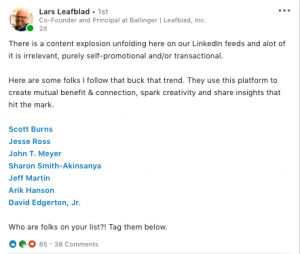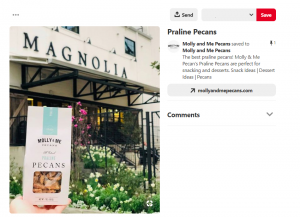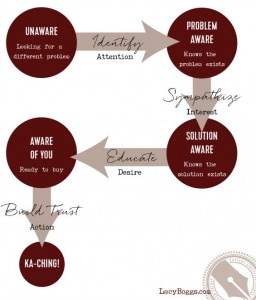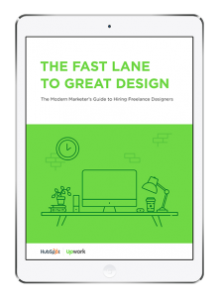If meteoric growth is any indicator of positive business sentiment, then the latest numbers from IAB suggest that paid advertising is paying off for brands—big time. According to a recent report issued by the Interactive Advertising Bureau (IAB), the second quarter of 2015 alone generated a record-setting $ 14.3 billion in online ad revenues in the US, up 22.5% year over year. For the first half of the year, Internet ad revenues in the US totaled $ 27.5 billion, a 19% year-over-year increase. This marks the sixth consecutive year of double-digit Q1-Q2 growth.
In short, paid advertising is working for brands just like yours. This should come as no surprise. One of the biggest benefits of paid advertising is that it enables you target specific audiences in a highly methodical and consistently measurable way, allowing you to reach the right people in the right place at the right time.
Search and display advertising on major platforms like Google AdWords and Bing Ads (Yahoo!/Bing Network) gives your business an efficient means to scale your brand message and content by tapping into their massive networks to show relevant ads to the people who are most likely to be interested in your products and services. In fact, businesses of all sizes and industry segments not only use paid advertising formats like search and display to generate new leads, but also rely on tools like ad retargeting (aka remarketing) to convert existing leads into paying customers.
So what are you waiting for? If you’re like many other business owners and managers, you probably want to experiment with paid search and display advertising but are not sure where to get started. Before you’re willing to join the ranks of the millions of other businesses leveraging paid advertising to increase ROI, you want a basic understanding of how search and display advertising actually works.
No worries, I’ve got your back. Read on.
Search Advertising via the Google Search Network
In contrast to SEO, which relies on unpaid “organic” means to achieve its ends, paid search allows you to pay a fee to have your web or social content displayed on the search engine results pages (SERPs) when someone queries a specific keyword or phrase into a search engine. Brands leverage paid search for many reasons, whether to drive traffic to their web or social sites, promote a product or service, or build awareness for their brand.
Perhaps the most commonly used online advertising platform is Google AdWords, Google’s ubiquitous online advertising tool that allows you to reach prospects and customers on desktop, laptop, tablet, or smartphone. Because of its wide reach and relative user friendliness for beginners, along with the fact that, depending on where you live, the Google search engine controls roughly 65-90% of all searches, the majority of this post is focused on Google AdWords, although further below I summarize the basics of one of its chief competitors, the Yahoo!/Bing Network.
Let’s get started.
The Google Search Network includes the Google search engine, along with other Google sites such as Google Maps and Shopping, as well as hundreds of non-Google search partner websites that show AdWords ads matched to search results. As noted above, the main benefit of advertising on the Google Search Network lies in the ability of businesses to reach customers who are actively searching for their specific product or service by displaying text ads near (often at the top) of Google search results.
Keywords
Much like organic search, the name of the game is to try and leverage relevant keywords and keyword phrases to connect with prospects and customers when they are searching for your product or service. However unlike organic search, with AdWords you pay a fee to have these keywords/phrases displayed prominently on Google SERPs.
In other words, AdWords will use your keywords—i.e. words or phrases that relevant to your product or service—to show your ads to people searching for similar terms on the Google Search Network.
Keywords in AdWords function just as they do in organic search, that is you begin by creating a list of keywords that people are most likely to use when searching for your product or service (specific, long-tail keyword phrases are better). However, unlike organic search, with AdWords you can chose the specific audience(s) or demographic group(s) you wish to display your ads to, which allows you to control the variables.
Display Advertising via the Google Display Network
The other half of the Google AdWords universe is the Google Display Network, which includes a collection of Google websites (like Google Finance, Gmail, Blogger, and YouTube), partner sites, and mobile sites and apps that show AdWords ads matched to the content on a given page.
Similar to the Google Search Network, keywords can trigger your ads to appear next to search results on Google and other search engines or on other sites across the Internet through the Google Display Network, which is a large collection of more than a million websites, videos, and apps where your ads can appear.
When setting up a Display Network campaign, you can either let Google automatically determine where your ads appear by matching your keywords to websites in the Display Network, or you can manage the process by picking specific placements and setting the bids for each, and then selecting the sites where your ads might appear.
In contrast to Google Search Network ads, which are predominantly text-only, Display Network campaigns can include text, image, rich media, and video ads, and can be targeted to a wider array of media platforms, including YouTube and mobile apps. As with Search Network campaigns, Display Network campaigns allow you to target specific audience groups and target (at least to an extent) where they can appear.
Given the broad choice of ad formats and wide-ranging media outlets, businesses can choose to run a Display Network campaign for a variety of reasons, which may include stimulating brand awareness, deepening engagement with new prospects, and enhancing loyalty with existing customers.
Ad Retargeting
With ad retargeting, you can show text, image, or video ads to people who already visited your website when they browse other sites on the Display Network. In general, marketers are only now beginning to recognize the applicability of ad retargeting to all stages of the buying cycle. Businesses are using ad retargeting to increase brand awareness, influence purchase decision, and optimize sales conversion.
Retargeting is a simple process that relies on the use of small snippets of Javascript code to anonymously “follow” your target audience after they’ve left your web page and serve up relevant ads to them when they visit other sites.
Here’s how it works: you place a small, unobtrusive piece of code on your website (this code is sometimes referred to as a pixel). Every time a new visitor comes to your site, the code drops an anonymous cookie into their browser. When your visitors browse other web pages, the browser cookie lets your retargeting provider (such as AdWords) know when to serve ads, ensuring that your ads are served only to people who have previously visited your site.
The inherent efficiency of ad retargeting allows you to run highly focused, measurable campaigns that can reach a broad audience.
The AdWords Bidding Process: Ad Rank and Quality Score
Ad Rank
The actual positioning of your ad is determined by a proprietary valuation system called Google Ad Rank. Ad Rank is calculated using your bid amount along with the components of your Quality Score (see below). Google actually recalculates your Ad Rank every time your ad competes in an auction, which means your ad positioning can fluctuate depending on the level of competition. Having said that, even if your competition enters a higher auction bid than yours, you can still win a higher position at a lower price by using highly relevant keywords, ads, and extensions (ad extensions show extra business information with your ad, such as an address, phone number, store rating, or additional webpage links).
Quality Score
Along with bid amount, your Quality Score ultimately determines your Ad Rank positioning. Quality Score is an estimate of the quality of your ads, keywords, and landing page. Higher-quality ads can lead to lower prices and better ad positions. The components of Quality Score (expected clickthrough rate, ad relevance, and landing page experience) are determined every time your keyword matches a customer’s search.
In other words, the more relevant your ads and landing pages are to the user, the more likely it is that you will earn a higher Quality Score and thus reap the benefits of a stronger Ad Rank, which include higher page positioning and lower cost-per-click, or CPC (i.e. the price you pay every time someone clicks on your ad).
If you want to learn more, the following video provides a decent overview of how the Google AdWords auction system works from non-other than Hal Varian, Chief Economist at Google.
Managing Your Budget: Popular Bidding Strategies
With AdWords, there is no minimum amount that you have to spend on a daily, weekly, or monthly basis. Instead, you set a daily budget and choose how you want to spend your money, which essentially boils down to choosing a bidding strategy. Your bidding strategy, in turn, should be driven by your specific campaign goals, such as whether you want to focus on getting clicks, impressions, or conversions.
Here is an overview of the three most common bidding strategies (all of which are used in both AdWords and Bing Ads):
- Cost-per-click (CPC): If you want to focus on clicks on your ads and drive traffic to your website, you’ll want to use CPC bidding.
- Cost-per-thousand impressions (CPM): If you want to focus on impressions—the number of times your ad shows—and increase awareness of your brand, you’ll want to use CPM bidding. Note that CPM bidding is available for Display Network campaigns only.
- Cost-per-acquisition (CPA): If you want to focus on conversions—which is when people take a specific action on your website after clicking one of your ads—you’ll want to use CPA bidding.
For more insight into setting budgets and bids for AdWords campaigns, check out this brief video.
Measuring Your Results
Unlike other forms of advertising, which often rely on indirect or anecdotal analytical measurements, platforms like AdWords and Bing Ads provide a constant stream of actionable (often real time or near real time) campaign performance data. Both platforms give you tools to make the connection between ad clicks and lead/sales conversion actions, such as if a prospect clicked your ad and then purchased your product, downloaded your app, or made a call and placed an order. You can also analyze valuable click-to-conversion rates like average ad spend per lead or per customer, or track relevant customer behavior metrics like specific pages visited and aggregate time on site before a conversion action.
One really useful feature of AdWords is the ability to link with your Google Analytics account. Google Analytics is a free Google product that provides in-depth reporting on how people use your website—information you can leverage to increase website conversion and improve ad performance.
Advertising on the Yahoo!/Bing Network
The paid search advertising system utilized by the Yahoo!/Bing Network through Bing Ads essentially mirrors Google AdWords, so much so that Bing Ads users are even able to import their Google AdWords accounts directly into Bing Ads.
Advertisers on Bing Ads still use keyword-driven ads in an auction-based system that relies on the same Ad Rank metric that is composed of a similar combination of bid amount and Quality Score. Although the Bing Ads Quality Score is slightly different in form (they use keyword relevance, landing page relevance, and landing page quality to determine Quality Score), it is virtually the same in substance. This is no fluke; it is part of a conscious decision by the Bing Ads team to be more like AdWords.
Those interested in advertising on the Yahoo!/Bing Network should check out the video series found at the bottom of this page, which provides step-by-step guidance on getting started with Bing Ads.
Threat from Ad Blocking Software
The debate over the growing threat posed by the rise of desktop and mobile ad blocking software was given new life last month when Apple unveiled its new iPhone and iOS 9, which has ad blocking functionality baked into its operating system (for those interested in learning more about ad blocking software, check out this post from HubSpot on how ad blocking software works).
As I noted in a recent blog on the subject, Ad blocking is still in its early days. In fact, as of Q2 2014, only 4.9% of Internet users worldwide (144 million per month) were using ad-blocking software—although admittedly this represents a nearly 70% year-over-year increase from 2013 levels.
I honestly think we’re still a ways off from reaching a point where the existence of ad blocking software significantly dampens the ROI of paid advertising (despite certain signs to the contrary). That being said, it seems to be a rapidly developing story worth monitoring in coming months.
Final Thoughts
Hopefully after readying this you have a better understanding of the basics of search and display advertising. I will say, I think both Google and Yahoo!/Bing have done a pretty good job of creating relatively intuitive ad platforms that allow even novice users to set up and manage basic search and display campaigns without too much difficulty.
If, on the other hand, you’re interested in taking the initial steps to becoming a true AdWords ninja, I suggest you sign up for Google Partners program and work toward obtaining your Google AdWords certification. I finally got around to doing so myself last summer, and I assure you it’s a relatively painless process. For those of you interesting in becoming a Bing Ads Accredited Professional, here’s a link to the Bing Ads training and accreditation site.
(86)




